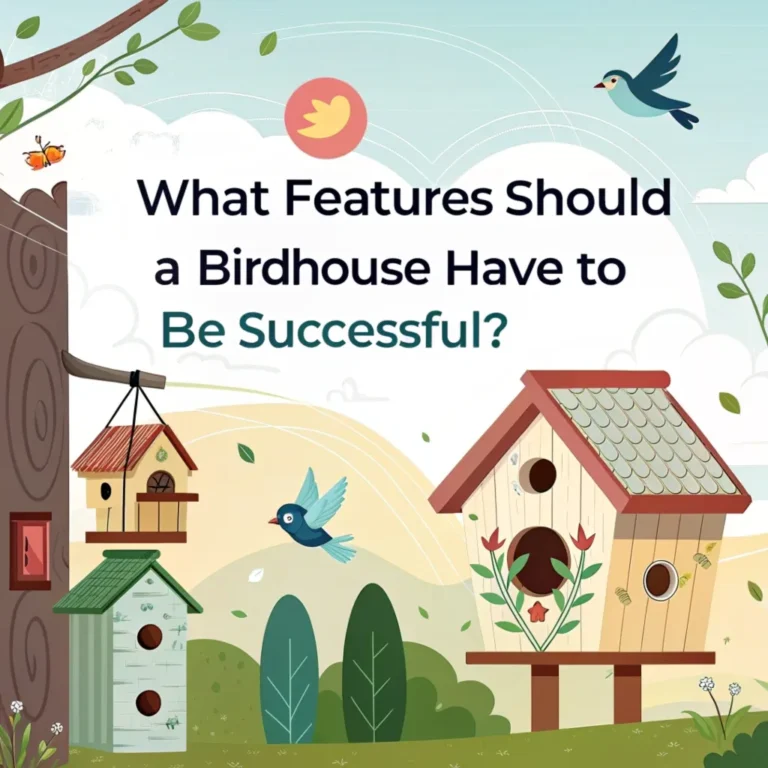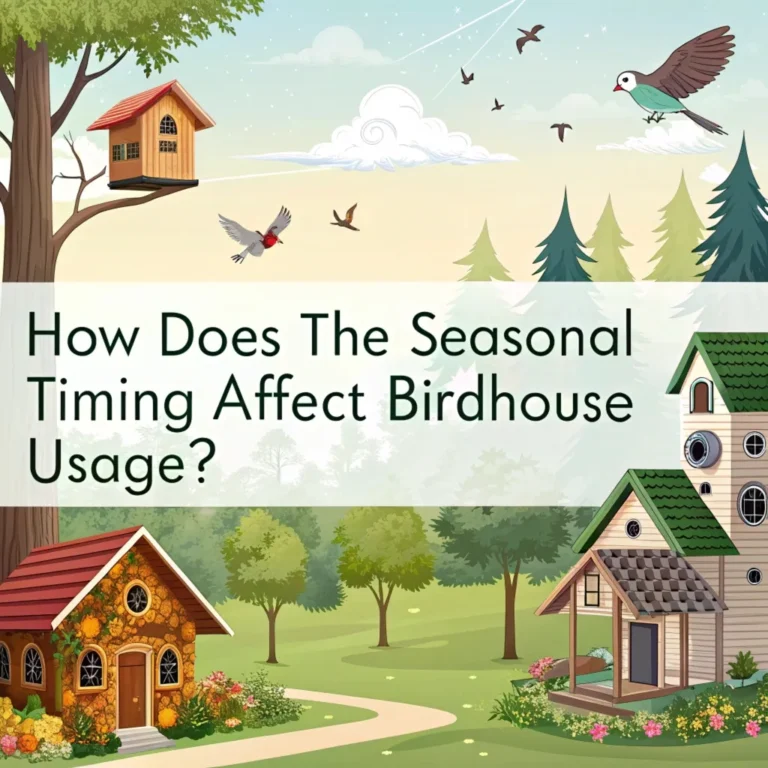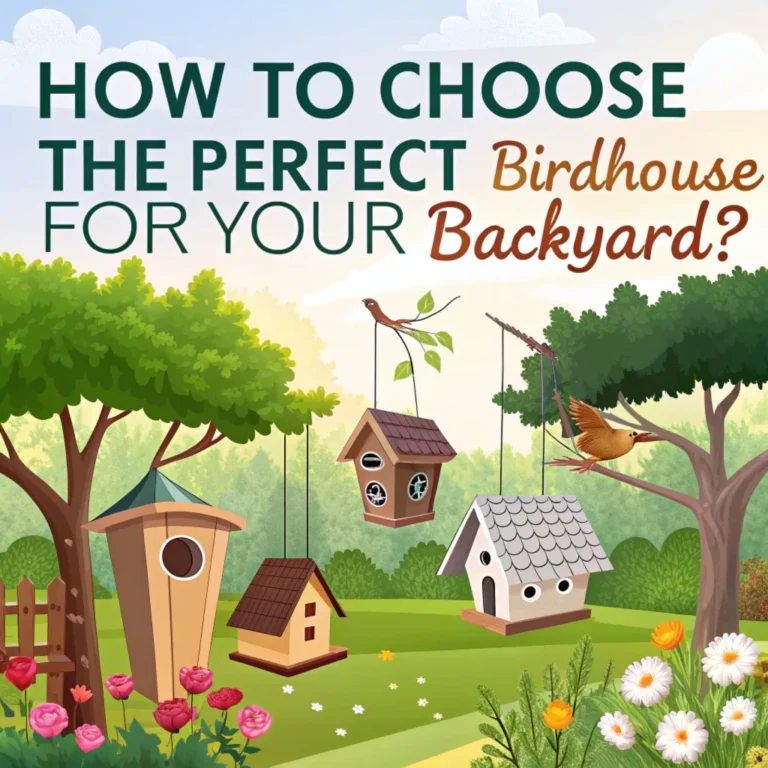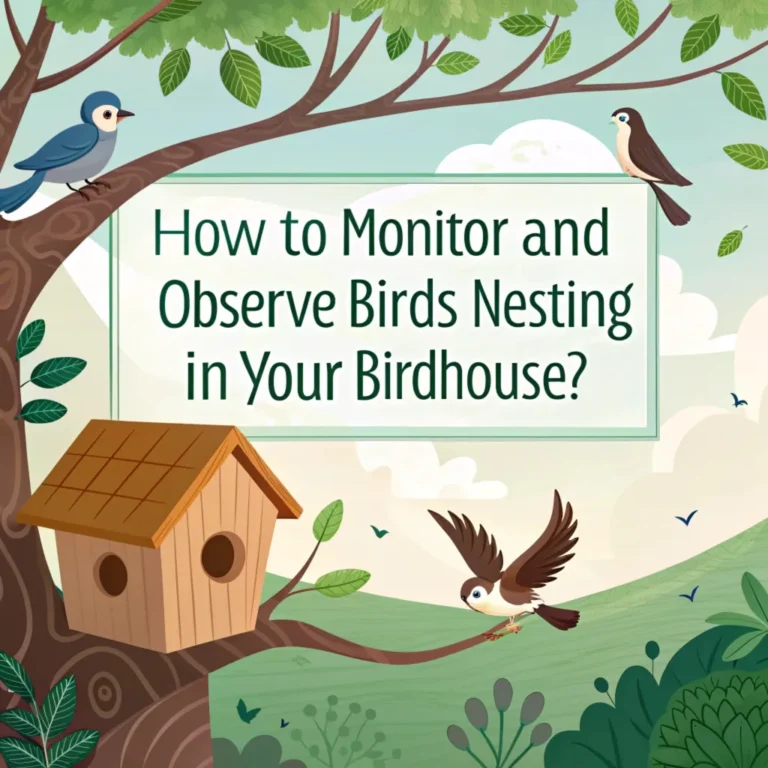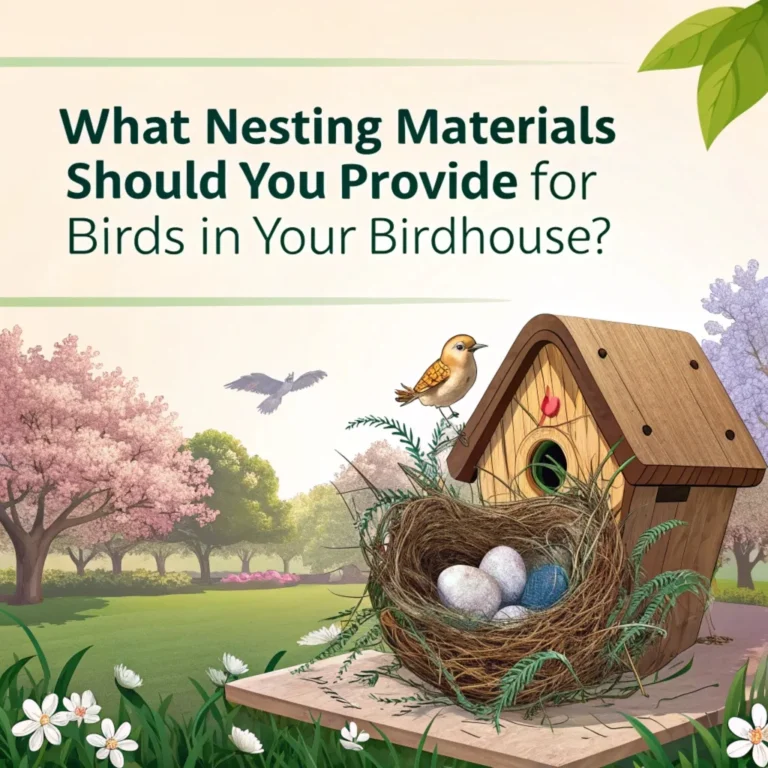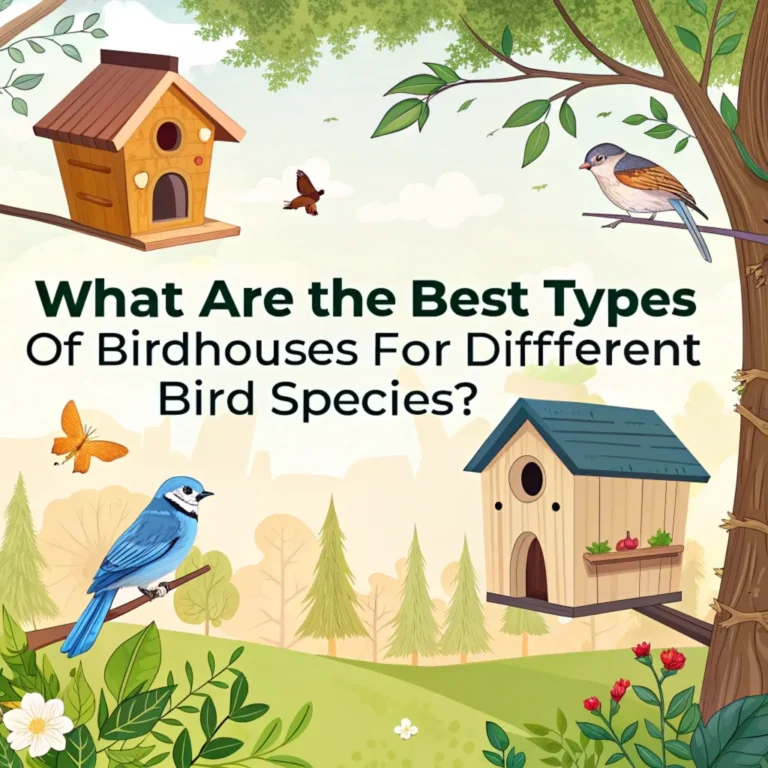Are There Specific Birdhouses for Bluebird? A Comprehensive Guide
Bluebird add color and song to gardens. Many people want to attract these birds. This guide explains how to make and place birdhouses for bluebirds.
It covers important details like size, materials, and location. By following these tips, you can create ideal homes for bluebirds. This increases the chances of these lovely birds nesting in your yard.
The guide also includes information on maintaining birdhouses and creating a bluebird-friendly environment.

Key Takeaways
- Entrance hole size: 1 1/2 inches in diameter for Eastern Bluebirds, 1 9/16 inches for Western and Mountain Bluebirds
- Floor dimensions: 4 x 4 inches to 5 1/2 x 5 1/2 inches
- Height: Approximately 8 to 12 inches
- Materials: Cedar, pine, or recycled plastic
- Placement: 5 to 10 feet high, facing open areas
- Spacing: At least 100 feet apart
- Ventilation: Essential for temperature regulation
- Drainage: Holes in the bottom for moisture control
- Predator protection: Baffles and proper design features
- Monitoring: Regular checks for nest progress and cleaning
Bluebird House Dimensions
The size of a bluebird house plays a crucial role in attracting these birds. The floor should measure between 4 x 4 inches and 5 1/2 x 5 1/2 inches. This size provides enough space for the nest while discouraging larger birds from using the box.
The height of the birdhouse should be approximately 8 to 12 inches. This allows for adequate space above the nest for the growing chicks.
Proper dimensions are essential for creating a comfortable and safe environment for bluebirds. A well-sized house not only attracts these beautiful birds but also promotes successful breeding.
The right dimensions ensure that the birds have enough space to build their nests, lay eggs, and raise their young without feeling cramped or exposed to predators.
The interior space of the birdhouse is equally important. A depth of about 6 to 8 inches from the entrance hole to the floor provides adequate protection for the nest and nestlings.
Entrance Hole Specifications
The entrance hole is a critical feature of any bluebird house. For Eastern Bluebirds, a 1 1/2 inch diameter hole is ideal. Western and Mountain Bluebirds prefer a slightly larger opening of 1 9/16 inches.
Some designs feature an oval-shaped entrance, measuring 1 3/8 x 2 1/4 inches. This shape can be more attractive to bluebirds and may deter some predators.
The entrance hole serves multiple purposes beyond simply allowing access. It plays a crucial role in regulating temperature and protecting the nest from rain and wind.
The specific size also helps to deter larger birds and some predators from entering the box, ensuring that the bluebirds have a safe and secure nesting site.
Placement of the entrance hole is also important. It should be about 6 inches above the floor of the birdhouse to prevent predators from reaching in and to keep nestlings safe.
Materials and Construction

Cedar, pine, and recycled plastic are excellent materials for bluebird houses. Cedar is particularly good due to its natural resistance to decay.
The wood should be at least 3/4 inch thick to provide insulation and durability. The interior of the box should have a rough surface to help fledglings climb out.
The choice of materials for a bluebird house can significantly impact its effectiveness and longevity.
Natural wood is often preferred as it mimics the birds‘ natural nesting sites. Cedar, in particular, offers excellent insulation properties and natural resistance to decay, making it an ideal choice for long-lasting birdhouses.
When constructing the birdhouse, avoid using treated wood or toxic paints that could harm the birds. Galvanized screws are preferable to nails for assembly, as they provide better durability and resistance to weathering.
Ventilation and Drainage
Proper ventilation is crucial for maintaining a comfortable temperature inside the birdhouse. Include small gaps between the roof and sides or drill ventilation holes near the top of the box.
Drainage holes in the bottom of the box are essential to prevent water accumulation, which can harm eggs or chicks.
Effective ventilation and drainage systems are vital for the health and safety of bluebirds. Good airflow helps regulate temperature, especially during hot summer days, preventing the nest from overheating. It also reduces humidity, which can lead to the growth of harmful mold and bacteria.
Drainage is equally important, as it prevents rainwater from pooling inside the birdhouse. This helps keep the nest dry and comfortable for the birds.
Placement and Orientation

Mount bluebird houses 5 to 10 feet high on a pole or post. Face the entrance hole towards an open area, preferably in an easterly direction.
Space multiple houses at least 100 feet apart, as bluebirds are territorial.
The location of your bluebird house can greatly influence its success in attracting birds. Bluebirds prefer open areas with short grass, such as meadows, pastures, or large lawns. These areas provide ideal hunting grounds for insects, which make up a significant part of their diet.
Avoid placing birdhouses near dense woods or areas with heavy brush, as these environments are less appealing to bluebirds and may attract competing species.
Predator Protection
Install a predator guard on the pole to deter climbing predators like snakes and raccoons. A slanted roof that extends over the entrance can also help protect against predators and weather.
Protecting bluebird houses from predators is crucial for the safety of both adult birds and their offspring.
Common predators include cats, raccoons, snakes, and even some larger birds. Implementing effective predator deterrents can significantly increase the success rate of bluebird nesting.
Baffles, which are cone-shaped or cylindrical barriers placed on the pole below the birdhouse, are highly effective in preventing climbing predators from reaching the nest.
Monitoring and Maintenance
Regular monitoring is important for successful bluebird nesting. Design your birdhouse with a side-opening door for easy access during nest checks.
Clean the box thoroughly after each brood fledges to prepare for potential subsequent nests in the same season.
Consistent monitoring of bluebird houses is essential for ensuring the health and safety of the nesting birds. Regular checks allow you to track the progress of the nest, identify any potential problems early, and take action if necessary.
However, it’s important to conduct these checks carefully to avoid disturbing the birds.
When cleaning the birdhouse, remove old nesting material and scrub the interior with a mild soap solution. Rinse thoroughly and allow to dry completely before closing it up.
Special Design Features
Some innovative designs include the Kentucky Bluebird Box or Slot box, which uses a wide entrance slot instead of a round hole. This design can make it easier for bluebirds to defend against competitors.
The Gilwood box is a wedge-shaped design with a U-shaped entrance hole that can be adjusted in size. Some studies suggest bluebirds prefer this design over traditional boxes.
Innovative birdhouse designs can offer unique advantages for bluebirds. These special features often address specific challenges faced by nesting birds, such as competition from other species or vulnerability to predators.
By incorporating these design elements, you can create a more attractive and secure environment for bluebirds.
Experimenting with different designs can help you determine what works best in your specific location and for the bluebird population in your area.
Attracting Bluebirds Beyond the Birdhouse
While a proper birdhouse is essential, creating a bluebird-friendly environment involves more than just housing. Plant native berry-producing shrubs like red chokeberry or flowering dogwood to provide natural food sources.
Open areas with short grass, such as meadows or the edges of fields, are ideal habitats for bluebirds to hunt insects.
Creating a comprehensive bluebird habitat goes beyond just providing a suitable nesting box. Bluebirds are attracted to areas that offer a combination of food sources, water, and appropriate perching spots.
By enhancing your yard or garden with these elements, you can create a more inviting environment for bluebirds throughout the year.
Water features, such as birdbaths or small fountains, can be particularly attractive to bluebirds, especially during hot summer months.
FAQs
How often should I clean a bluebird house?
Clean the birdhouse thoroughly after each brood fledges, typically 2-3 times per season.
Can I paint a bluebird house?
It’s best to leave the wood natural or use a light, earth-tone stain. Avoid dark colors that can cause overheating.
How can I deter house sparrows from using bluebird houses?
Use entrance holes specifically sized for bluebirds and avoid placing perches on the birdhouse.
When is the best time to put up a bluebird house?
Install birdhouses by late winter or early spring, before the breeding season begins.
How many bluebird houses should I put in my yard?
Start with one or two houses spaced at least 100 feet apart. Observe usage before adding more.
By following these guidelines, you can create an inviting habitat for bluebirds in your yard or garden. Remember, patience is key when attracting wildlife, and with the right setup, you’ll soon enjoy the delightful presence of these beautiful birds.
Attracting bluebirds to your property can be a rewarding experience that enhances your connection with nature.
These vibrant birds not only add beauty to your surroundings but also play a crucial role in controlling insect populations. By providing suitable nesting sites and creating a bluebird-friendly environment, you contribute to the conservation of these beloved species.
Remember that successful bluebird attraction may take time. Be patient and persistent in your efforts, and you’ll likely be rewarded with the sight of these charming birds making their home in your carefully prepared birdhouses.

Luna is the passionate founder and author of Birds and You, a website dedicated to sharing her love for birds with fellow enthusiasts. Through her engaging articles and guides, she aims to educate and inspire others to explore the fascinating world of birds. When she’s not writing, you can find Luna observing birds in their natural habitats or sharing beautiful bird photography on Pinterest. Join her on this journey to celebrate and protect our feathered friends!


